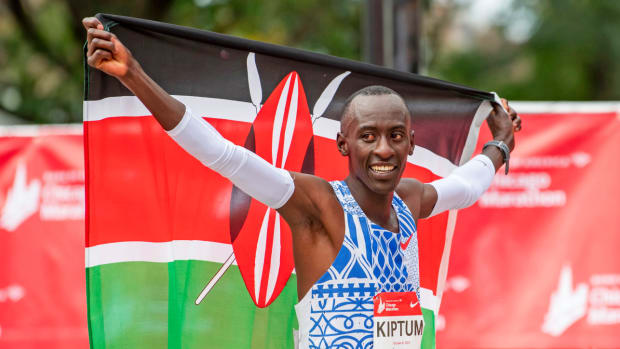Black History Month: Remembering Wilma Rudolph's Unlikely Journey to Olympic Gold
This February, Sports Illustrated is celebrating Black History Month by spotlighting a different iconic athlete every day. Today, SI looks back on the legacy of Wilma Rudolph.
Wilma Rudolph was once told that she would never walk again. Four years later, she was in the Olympics. Four years after that, she won three gold medals and set a world record in the process.
Such is the improbable story of Rudolph, who became one of the world's most famous athletes after the 1960 Rome Olympics. Here's how Sports Illustrated's Barbara Heilman described her that year:
A slender 5 feet 11 inches, Wilma Rudolph can command a look of mingled graciousness and hauteur that suggests a duchess but, in a crowd that is one part Skeeter and 5,000 parts people, young men and babies will come to her in 30 seconds. Her manners are of a natural delicacy and sweetness as true as good weather. She tore up Rome, then Greece, England, Holland and Germany. In Cologne it took mounted police to keep back her admirers; in Wuppertal, police dogs. In Berlin her public stole her shoes, surrounded her bus (she boarded it in her bare feet) and beat on it with their fists to make her wave. Autograph hunters jostled her wherever she went, and she was deluged with letters, gifts, telegrams and pleas that she stay where she was or come to a dozen cities where she wasn't.
Born prematurely as the 20th of 22nd children, Rudolph dealt with a bevy of illnesses as a child, including pneumonia, scarlet fever and polio. She recovered from the first two, but the polio lingered. Because of the racist medical practices of the time period, Rudolph was not granted care in her hometown—her parents had to seek treatment for her at the historically black Meharry Medical College in Nashville, about 50 miles from her native Clarksville.
So every week for two years, Rudolph and her mother would make the 100-mile round-trip pilgrimage in order to rehabilitate her left leg, which, due to the polio, was left disabled. She also received at-home massages four times a day from family members.
Her treatment at Meharry Medical College (now the Nashville General Hospital at Meharry), along with her family's help, allowed Rudolph to beat polio and walk without a leg brace or an orthopedic shoe by the time she turned 12.
Three years later, fully recovered from the incapacitating effects of polio, Rudolph was discovered by Tennessee State University's track coach, Ed Temple, when Rudolph was playing for her high school basketball team as a sophomore. Temple took her under her wing. After a year of diligent training, Rudolph qualified for the U.S. Olympic track and field team trials and, eventually, the Olympics themselves.
More From Biography.com
• Florence Griffith Joyner
• Jackie Joyner-Kersee
• Wilma Rudolph
• Althea Gibson
She only won one bronze medal in the 4x100m in 1956, but after four years of training—eight years removed from polio—Rudolph competed in the event that made her internationally famous: The 1960 Olympics.
There, she won gold medals in the 100m, 200m and 4x100m relay, becoming the first woman to ever win three gold medals in a single Olympics. She set a world record in the 4x100m relay and set an Olympic record at the 200m. Rudolph would have set a world record in the 100m, too, had it not been wind-aided at 2.75 meters/second, .75 higher than the maximum 2 m/s needed for a tabulated record.
Because the games were among the first to be televised worldwide on television, Rudolph became a household name. With her newfound fame, she became a civil rights and women's rights activist at home and a role model for athletes abroad. Her legacy as a pioneer lives on.
From the SI Vault:
"Like Nothing Else in Tennessee," by Barbara Heilman (Nov. 14, 1960)
"What's Garbo Doing In The Track And Field Hall of Fame? Go And Find Out, by Myra Gelband (Oct. 22, 1979)




